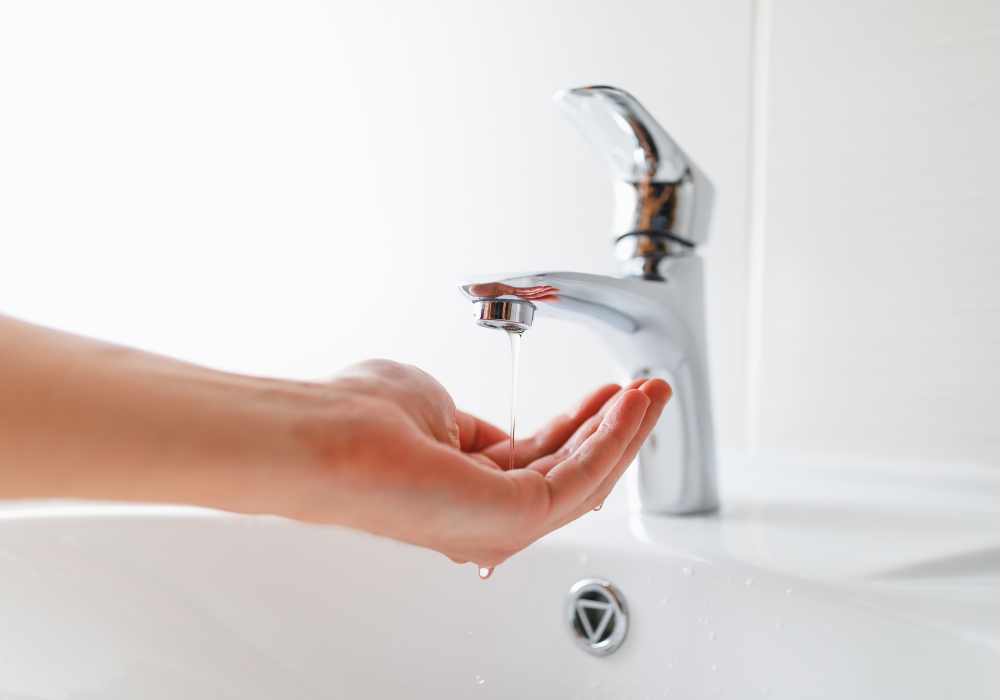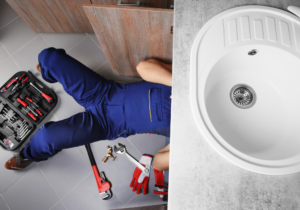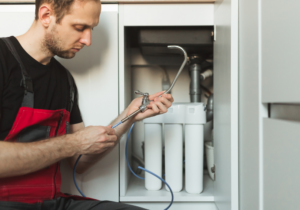As a homeowner, you rely on your plumbing system for everyday tasks such as showering, washing dishes, and watering your garden. One common issue that can disrupt these activities is low water pressure. Low water pressure is not only inconvenient but can also be a sign of underlying problems that need to be addressed to maintain comfort and functionality in your home.
In this blog post, we will explore the causes of low water pressure, how to identify it, DIY solutions, when to call a professional, and preventive measures to help ensure your water pressure remains optimal.
 What Causes Low Water Pressure?
What Causes Low Water Pressure?
Low water pressure can be caused by a variety of factors, ranging from simple to complex. Understanding these causes can help you diagnose and address the issue effectively:
- Clogs and Blockages: Mineral deposits, debris, and sediment build-up in pipes can restrict water flow, leading to reduced pressure.
- Leaks: Water leaks in your pipes, fixtures, or appliances can divert water away from its intended destination, causing a drop in pressure.
- Municipal Supply Issues: Sometimes, the problem lies with the municipal water supply. Maintenance work, main breaks, or high-demand periods can temporarily reduce water pressure.
- Faulty Pressure Regulator: If your home has a pressure regulator, a malfunctioning unit can cause either too high or too low water pressure.
- Corroded Pipes: Older homes with galvanized steel pipes may experience corrosion, which narrows the interior of the pipes and reduces water flow.
How to Identify Low Water Pressure in Your Home
Recognizing low water pressure is the first step toward resolving the issue. Here are some tips to help you identify it:
- Check Multiple Fixtures: Determine if the low water pressure is affecting only one fixture or multiple fixtures throughout your home. This can help pinpoint whether the issue is localized or widespread.
- Measure Water Pressure: Use a pressure gauge to measure the water pressure in your home. Ideal residential water pressure typically ranges from 40 to 60 PSI (pounds per square inch).
- Distinguish Temporary vs. Persistent Issues: Temporary drops in water pressure can occur due to high demand periods or municipal maintenance. Persistent low pressure likely indicates a problem within your plumbing system.
When to Call a Professional
While DIY solutions can often resolve minor issues, there are times when professional intervention is necessary. Here are signs that indicate it’s time to call a plumber:
- Widespread Low Pressure: If low water pressure is affecting multiple fixtures throughout your home and DIY efforts haven’t resolved the issue, it may indicate a more serious problem within your plumbing system.
- Persistent Issues: Ongoing low water pressure despite temporary fixes suggests an underlying issue that requires professional diagnosis and repair.
- Visible Corrosion: If you notice corroded pipes, it’s essential to have a professional assess the extent of the damage and recommend appropriate repairs or replacements.
- Pressure Regulator Problems: If you suspect a faulty pressure regulator, a plumber can test and replace the unit if necessary.
 Preventing Low Water Pressure in the Future
Preventing Low Water Pressure in the Future
Proactive maintenance and regular inspections can help prevent low water pressure issues from arising. Here are some tips to keep your plumbing system in top shape:
- Routine Plumbing Inspections: Schedule regular inspections with a licensed plumber to identify and address potential issues before they become major problems.
- Water Softener Installation: If you live in an area with hard water, consider installing a water softener to reduce mineral buildup in your pipes and fixtures.
- Pressure Regulator Maintenance: Ensure your pressure regulator is functioning correctly by having it tested and adjusted as needed.
- Regular Pipe Cleaning: Periodically clean faucet aerators, showerheads, and other fixtures to prevent mineral deposits from restricting water flow.
Low water pressure can be a frustrating issue for homeowners, but understanding its causes and solutions can help you restore optimal water flow in your home. By following the tips outlined in this blog post, you can diagnose and address low water pressure issues, whether through simple DIY fixes or by calling in a professional when necessary.
Remember, regular maintenance and proactive measures are key to preventing low water pressure in the future. If you continue to experience low water pressure despite your efforts, don’t hesitate to seek assistance from a licensed plumber to ensure your home’s plumbing system remains in excellent condition.


 What Causes Low Water Pressure?
What Causes Low Water Pressure? Preventing Low Water Pressure in the Future
Preventing Low Water Pressure in the Future